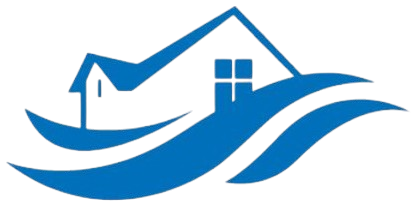A/C Unit Drain Overflow Cleanup in Taylorsville, Utah
Possible Causes of an A/C Drain Overflow
One common reason for an air conditioning drain overflow is a clogged or blocked drain line. Over time, algae, mold, dirt, and other debris can accumulate within the condensate drain pipe, obstructing water flow and causing excess water to back up. This buildup often leads to leaks that can damage your property if not promptly addressed.
Another frequent cause is a malfunctioning or damaged drain pan. When the pan beneath your A/C unit cracks or rusts, it may fail to collect condensate properly, leading to water spilling onto the surrounding areas. Additionally, high humidity levels or excessively humid conditions can produce more condensation than the drain system can handle, resulting in overflows.
How We Can Fix an A/C Drain Overflow
Our team begins by thoroughly inspecting your A/C system to identify the root cause of the overflow. We check the condition of the drain line, pan, and pump to understand what might be causing blockages or leaks. If we find a clog, our experts carefully remove debris to restore proper drainage, ensuring your system functions efficiently.
In cases where the drain pan is damaged or rusted, we replace it with a durable, corrosion-resistant component to prevent future leaks. We also clean and disinfect the entire drainage system to eliminate mold and algae growth, which can worsen the problem over time. This comprehensive approach allows us to prevent recurring issues and extend the lifespan of your cooling system.
Our technicians utilize advanced tools such as drain snakes and high-pressure water jets to clear stubborn blockages. We also recommend and install necessary repairs or upgrades, like drain line covers or backup safety features, to safeguard against future overflows. After completing the cleanup and repairs, we ensure your system is running smoothly and efficiently.
Why We Are the Best Choice for A/C Drain Overflow Cleanup
We pride ourselves on offering fast, reliable service tailored to your needs. Our team of experienced water damage restoration professionals in Taylorsville is highly trained to handle all types of HVAC drainage issues promptly. We understand how damaging water leaks can be, which is why we act quickly to prevent further property damage.
Using the latest technology and proven techniques, our experts ensure thorough inspections and effective solutions that stand the test of time. We prioritize transparent communication, so you always know what’s needed and how we will resolve it. Our goal is to deliver lasting solutions that keep your home or business safe and dry.
Customer satisfaction is at the heart of everything we do. We are dedicated to providing top-quality service with a friendly team that cares about your property. When you call us at (888) 884-7150, you can count on professional, courteous assistance that addresses your A/C drainage concerns effectively and affordably.
Frequently Asked Questions
What are the signs of an A/C drain overflow?
Indicators include water leaks around your HVAC units, water pooling on the floor, or increased humidity levels inside the property. Unusual odors or visible mold growth can also signal drainage issues.
How often should I have my A/C drain system inspected?
It is recommended to schedule professional inspections at least once a year, especially before the cooling season begins. Regular maintenance helps prevent blockages and prolongs system lifespan.
Can I fix a drain overflow myself?
While minor clogs can sometimes be cleared with simple tools, it’s best to call our experts for a thorough inspection and safe repairs. DIY fixes may cause further damage or void warranties.
What should I do if I notice water damage after a drain overflow?
Contact us immediately at (888) 884-7150. Our team will assess the extent of the water damage and provide prompt cleanup and restoration services to protect your property.
How can I prevent future drain overflows?
Regular maintenance, such as cleaning the condensate drain line and replacing damaged components, can significantly reduce the risk. Our team can set up a preventative maintenance plan tailored to your system.
